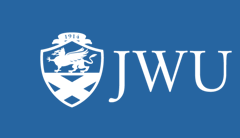To download dissertations and theses, please click on the appropriate "Download" button for your campus to log in and be e-verified. When you reach the "Sign into your JWU email" page, enter your JWU username and password.
Non-JWU users: Please talk to your librarian about requesting this dissertation through interlibrary loan.
Teachers' understanding and use of formative assessment strategies: A multiple embedded case study in K-12 urban ring schools of a mid -size city in Rhode Island
Abstract
There is a heavy emphasis on summative, standardized assessments of academic achievement in public schools in the United States (Black & Wiliam, 1998; Stiggins, 2002). Assessment should be integrated with instruction, which implies the meaning of items or assessment tasks will depend on the environment (Brookhart, 2008, p. 452). However, large-scale, high stakes assessment practices are in conflict with this assertion due to the requirement that they be consistently applied among large populations of students (Brookhart; Black & Wiliam; Harlen & Crick, 2003). Using a cognitive constructivist perspective on assessment, "teachers and learners construct schemas or integrate representations from assessments into existing views of the self, of teaching and learning, and of the curriculum" (Tittle, 1994, p. 151). The heavy reliance on summative assessment practices is juxtaposed to formative assessment purposes and can be problematic for teachers and students alike. A mixed methods case study was implemented to investigate the following questions: How do elementary (N=60), middle (N=52), and high school (N=118) teachers in an urban ring of a mid size city, describe formative assessment? To what extent do these three groups of teachers feel that they are able to implement formative assessment strategies in their classrooms? What differences exist in the ways these three groups of teachers describe and use formative assessment? Both qualitative and quantitative research methods were used to address these questions. The quantitative portion of the survey questionnaire was used to gather data to answer the research questions. The researcher compared the survey responses from the three groups of teachers using ANOVA with a post hoc Scheffe' to determine if there was a statistically significant difference among the ways in which these groups interpret, apply, and understand formative assessment strategies. The data from the qualitative portion of the survey sought to delve more deeply into the research questions and to investigate the relationship among these groups. A major finding of this study is, although teachers can define summative and formative assessment, they demonstrate a lack of deep understanding with regard to how these forms of assessment can be used to improve student learning. Assessments can and should be used to both assess after teaching and inform teaching as it takes place. It is important to be reminded that for assessments to be effective they must be effectively implemented (Harlen, 2005). Recommendations will be made to the principals, teachers, and superintendent in an effort to improve formative assessment strategies within the classrooms of these schools. Additionally, the results may be used by the district to offer more meaningful professional learning activities for all staff.
Subject Area
Educational tests & measurements|Curriculum development
Recommended Citation
Frey, Caroline Adams, "Teachers' understanding and use of formative assessment strategies: A multiple embedded case study in K-12 urban ring schools of a mid -size city in Rhode Island" (2009). Dissertation & Theses Collection. AAI3365829.
https://scholarsarchive.jwu.edu/dissertations/AAI3365829

